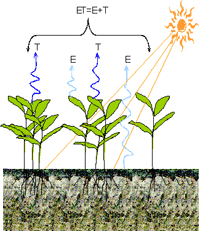Agricultural Research Division of IANR

West Central Research and Extension Center, North Platte
Date of this Version
2019
Citation
Published in Agricultural Water Management 213 (2019) 693–706
doi:10.1016/j.agwat.2018.11.010
Abstract
Diversity in the knowledge, mindset, strategies, and tools that growers use to manage irrigation and fertilizer nitrogen culminates in diversity in profitability and environmental impact among farms. As growers, academia, and industry strive together to tackle the technological and non-technological challenges impeding better irrigation and fertilizer nitrogen management, a science-based evaluation of grower input amount and timing becomes an important initial step in the process. Providing such valuable feedback to growers is a high-priority objective for the University of Nebraska-Lincoln Testing Ag Performance Solutions (UNL-TAPS) farm management competition. In this competition, each team of mostly growers made management decisions for field corn in three replicated plots within the same field at the West Central Research and Extension Center in North Platte, NE, and vied for maximum profitability and most judicious input management. The 2017 dataset affirmed existing theory predicting that many efficiency indices strictly decrease in value with increasing seasonal input amount and thus would fail to point towards an appropriate input level. Furthermore, grain yield was heavily affected by cultivar choice, so efficiency indices that depend on yield actually obscured rather than facilitated the evaluation of irrigation and fertilizer nitrogen management. An alternate evaluation approach is to compare a grower’s seasonal input amount or input temporal distribution against an appropriate range enveloped by university recommendations on the high end and observed yield-limiting thresholds on the low end. Where irrigation and fertilizer nitrogen are relatively inexpensive and where producing near-maximum yield is optimal, this approach is suitable for analyzing an input in isolation and for analyzing multiple inputs simultaneously.


Comments
Copyright © 2018 Elsevier B.V. Used by permission.